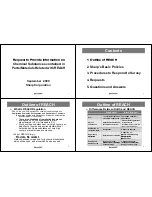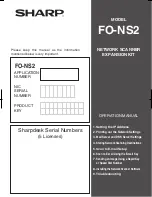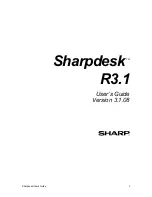
ThinApp User’s Guide
82
VMware, Inc.
AllowUnsupportedExternalChildProcesses
The
AllowUnsupportedExternalChildProcesses
parameter
specifies
whether
to
run
64
‐
bit
child
processes
in
the
physical
environment.
ThinApp
runs
64
‐
bit
applications
in
the
physical
environment
because
ThinApp
does
not
support
64
‐
bit
processes
and
cannot
virtualize
a
64
‐
bit
application.
ThinApp
sets
an
initial
value
of
the
AllowUnsupportedExternalChildProcesses
parameter
that
runs
64
‐
bit
applications
in
the
physical
environment.
You
can
run
64
‐
bit
child
process
tasks
on
applications
that
run
on
64
‐
bit
systems.
Running
the
spooler
is
an
example
of
a
64
‐
bit
child
process
task.
Examples
To
protect
the
physical
file
system
from
any
changes,
you
can
modify
the
AllowUnsupportedExternalChildProcesses
parameter
and
block
ThinApp
from
generating
64
‐
bit
child
processes
outside
of
the
virtual
environment.
ThinApp
cannot
run
any
64
‐
bit
processes
because
ThinApp
does
not
support
the
processes
in
the
virtual
environment.
[BuildOptions]
AllowUnsupportedExternalChildProcesses=0
AutoShutdownServices
The
AutoShutdownServices
parameter
controls
whether
to
shut
down
virtual
services
when
the
last
nonservice
process
exits.
ThinApp
sets
an
initial
value
to
stop
virtual
services
when
the
last
nonservice
process
exits.
The
parameter
does
not
affect
services
outside
the
virtual
context.
Examples
You
can
modify
the
AutoShutdownServices
parameter
when
you
run
Apache
Web
Server
and
want
to
keep
the
virtual
service
running
after
the
application
that
starts
the
service
exits.
[BuildOptions]
AutoShutdownServices=0
AutoStartServices
The
AutoStartServices
parameter
controls
whether
to
start
the
virtual
services
when
the
first
virtual
application
starts.
ThinApp
sets
an
initial
value
that
starts
the
virtual
services
that
are
installed
with
the
startup
type
of
Automatic.
The
virtual
services
start
when
the
user
runs
the
first
parent
process.
Examples
When
applications
install
a
service
but
do
not
use
it,
you can
modify
the
AutoStartServices
parameter
to
prevent
the
start
of
the
virtual
service
and
save
time.
[BuildOptions]
AutoStartServices=0
ChildProcessEnvironmentDefault
The
ChildProcessEnvironmentDefault
parameter
determines
whether
ThinApp
runs
all
child
processes
in
the
virtual
environment.
ThinApp
creates
all
child
processes
in
the
virtual
environment.
If
the
processes
are
slow,
you
might
want
to
move
child
processes
to
the
physical
environment.
As
a
child
process,
Microsoft
Outlook
might
affect
performance
when
it
copies
the
whole
mailbox
to
the
virtual
environment.
You
can
create
specific
exceptions
with
the
ChildProcessEnvironmentExceptions
parameter.
See
“ChildProcessEnvironmentExceptions”
on
page 83.
Summary of Contents for THINAPP 4.6 - MIGRATING APPLICATIONS TECHNICAL NOTE
Page 38: ...ThinApp User s Guide 38 VMware Inc...
Page 114: ...ThinApp User s Guide 114 VMware Inc...
Page 136: ...ThinApp User s Guide 136 VMware Inc...
















































